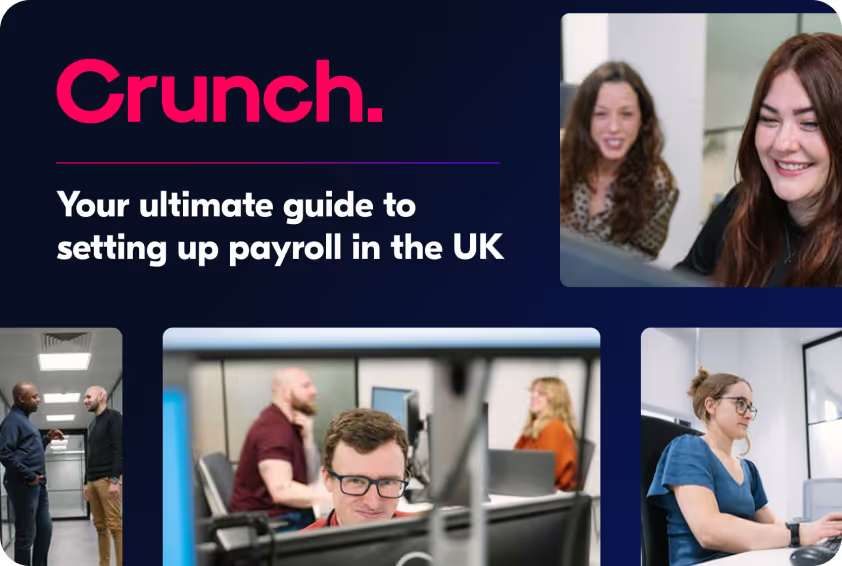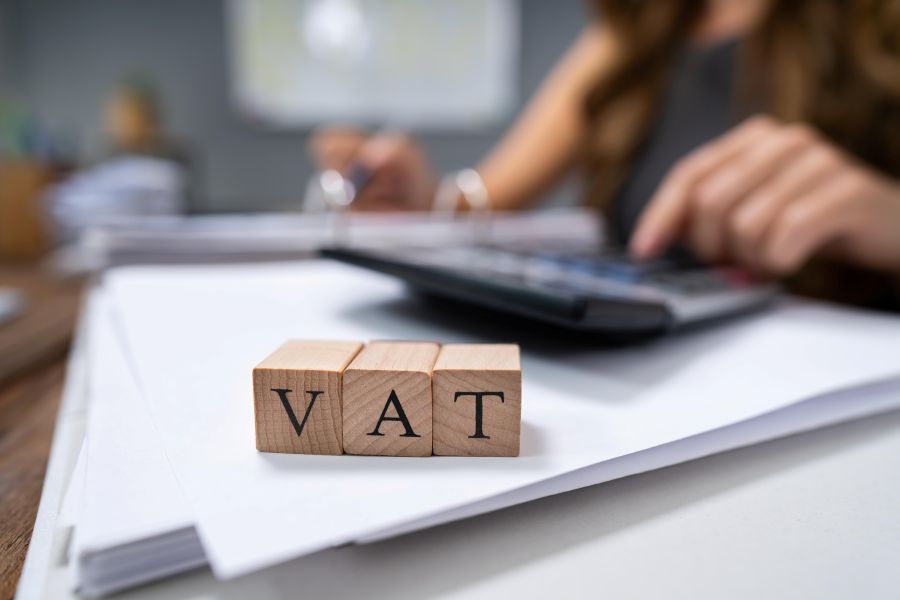If you run a business in the UK, you’ve probably heard about VAT, or Value Added Tax, and felt your brain start to ache a little. Do businesses actually pay VAT, or are they just middlemen sending money to HMRC?
It can be confusing, but getting your head around it is crucial if you want to stay on the right side of the law, keep your cash flow healthy, and reclaim the VAT you’re entitled to.
In this guide, we’ll break down everything you need to know: who has to register, when you need to charge VAT, how you reclaim it, and what the rules are for exempt or zero-rated goods and services. By the end, you’ll know the answer to the question: do businesses pay VAT and understand whether it is something your business pays, collects, or a bit of both.
What is VAT?
In simple terms, VAT is a tax added to most goods and services sold by businesses that are registered for VAT. The tricky bit is that the cost is ultimately covered by your customers, but as a business owner, you’re the one collecting it and passing it on to HMRC. Think of your business as the post office of VAT, except instead of letters, you’re delivering tax.
Understanding how VAT works also helps answer the question: do businesses pay VAT themselves, or is it always passed on to customers?
VAT Rates
VAT comes in three flavours:
- Standard rate (currently 20%) for most goods and services.
- Reduced rate (currently 5%) for things like some domestic fuel and power, and certain mobility aids.
Zero rate (0%) for specific goods and services, including many exports. Zero-rated still counts as taxable, but no VAT is added.
It’s important to know the difference between zero-rated and exempt. Exempt goods do not charge VAT and usually mean you cannot reclaim VAT on related purchases. Zero-rated goods charge VAT at 0%, and you can usually reclaim input VAT.
For a deeper dive into the different VAT codes and how they affect accounting, check out our guide ‘UK VAT codes explained: A complete guide for accounting’.
{{crunch-free}}
When do businesses have to register for VAT?
So when do you actually need to register? You have to do so if your taxable turnover in the last 12 months goes over £90,000 or if you expect your taxable turnover to exceed £90,000 in the next 30 days.
Taxable turnover is basically everything you sell that isn’t exempt or out of scope. That includes zero-rated, reduced-rated, and standard-rated goods and services.
If you’re under the threshold, you can still register voluntarily. Some businesses do this to reclaim VAT on purchases or to appear bigger than they are. Clever, right? But being VAT-registered isn’t always a win for every small business - if you’re curious about the potential downsides, check out our guide “Is being VAT registered hurting my small business”.
If you’re comfortably under the threshold and your sales are mostly exempt, congratulations, you don’t need to worry about registering just yet.
What happens when a business is VAT registered?
Once you’re registered, a few rules apply:
- Charge VAT on goods and services that are VATable, meaning not exempt.
- Use the correct VAT rate: standard, reduced, or zero.
- Put all the right information on invoices, including your VAT number, and show VAT separately.
- Keep thorough records.
- Submit VAT returns, usually every three months. This is where you report how much VAT you charged (output VAT), how much you paid on business purchases (input VAT), and either pay HMRC or reclaim a refund if you’ve overpaid.
It sounds complicated, but once you’ve got a system in place (and support from an accountant like Crunch), it’s manageable.
Charging VAT as a business
Now that you know the rules for being VAT-registered, let’s talk about charging VAT. This isn’t just about adding a number at the end of an invoice. Charging VAT correctly helps you stay compliant, ensures your customers know what they are paying, and keeps your records neat for HMRC.
Once registered, you might wonder: do businesses pay VAT on their own purchases, or just charge it to customers? Let’s break down how output VAT works in practice.
Output VAT
When you sell goods or services that are VATable, you calculate the price without VAT, the net price, and then add the appropriate VAT rate to get the total your customer pays.
Make sure VAT is shown clearly on invoices, record it in your VAT account, and report it on your VAT return. If you sell internationally, there are special rules and evidence requirements, especially for exports.
When do businesses not charge VAT
Even if you’re registered, there are times when you don’t charge VAT. For example:
- If the supply is exempt, such as education, healthcare, insurance, or certain financial services.
- If the supply is out of scope, like hobby sales, statutory fees, or international transactions.
Even when you don’t charge VAT, you still need to keep records. HMRC likes things neat.
Reclaiming VAT: Input VAT
VAT isn’t just something you pass on; you can reclaim VAT you’ve paid on business purchases, known as input VAT.
What you can reclaim
- VAT on items bought for business purposes, provided you have a valid invoice.
- If an item is used partly for business and partly personally, only the business portion can be reclaimed.
- VAT on goods or services purchased before registering for VAT may still be reclaimable in certain circumstances: up to four years for goods and six months for services.
Limits and exceptions
- Not all VAT can be reclaimed, especially on items related to exempt supplies.
- If you use the Flat Rate Scheme, input VAT on most purchases cannot be reclaimed, except for capital assets over a certain value.
- Vehicles and fuel have special rules: if a vehicle is used only for business, reclaim full VAT; if there is personal use, only reclaim the business proportion, and fuel is calculated differently.
Net VAT: to pay or reclaim
Every VAT return period, usually three months, you calculate:
- Output VAT: VAT charged to customers
- Input VAT: VAT you can reclaim
If output VAT is more than input VAT, you pay HMRC the difference. If input VAT is more than output VAT, you can reclaim the difference. Simple, right?
Practical examples of paying and reclaiming VAT
- Business A sells consulting services at 20 percent standard rate. It charges £10,000 plus £2,000 VAT. Purchases were £5,000 plus £1,000 VAT. HMRC gets £2,000 minus £1,000 = £1,000.
- Business B sells mostly zero-rated goods like children’s clothes. Zero VAT is charged on sales, but input VAT on purchases can still be reclaimed.
- Business C sells exempt services, like certain training courses. It cannot reclaim VAT on related expenses and does not charge VAT on sales.
Keeping records and Making Tax Digital
Accurate records are key. Keep VAT invoices, records of VAT charged and paid, and for partly exempt businesses, records showing how VAT was apportioned.
Being VAT-registered also means you must comply with Making Tax Digital requirements. Which means keeping digital records and submitting VAT returns using compatible software.
{{tax-guide}}
Key things to watch out for
VAT can feel like a headache, but keeping a few things in mind will make life a lot easier.
1. Check your VAT rates
Make sure you’re charging the right rate for your goods or services. Getting it wrong can be expensive.
2. Keep an eye on your turnover
You don’t want to accidentally cross the registration threshold.
3. Stay organised with records
Good, tidy records make VAT returns far less stressful.
4. Handle partly exempt VAT carefully
If your business mixes taxable and exempt sales, only reclaim the VAT you’re entitled to.
5. Understand special schemes
If you’re on the Flat Rate Scheme or using the Cash Accounting scheme, know how it changes the way you account for VAT.
So, do businesses pay VAT?
Yes, but usually not in the way you might think. VAT-registered businesses charge it on sales and pay it to HMRC, but they can also reclaim VAT on many business expenses. In some cases, input VAT exceeds output VAT, leaving the business with a refund rather than a payment.
Whether your business must register depends on your taxable turnover. Zero-rated and exempt supplies add another layer of complexity, but knowing the rules keeps your business compliant and can even save money. Understanding VAT is less scary than it seems once you break it down.
And if managing VAT feels overwhelming, we’re here to help – our team of experts can guide you through registration, returns, and everything in between, so you can focus on running your business with peace of mind.

.svg)



.webp)




.avif)










